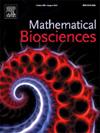Stratified epidemic model using a latent marked Hawkes process
Abstract
We extend the unstructured homogeneously mixing epidemic model introduced by Lamprinakou et al. (2023) to a finite population stratified by age bands. We model the actual unobserved infections using a latent marked Hawkes process and the reported aggregated infections as random quantities driven by the underlying Hawkes process. We apply a Kernel Density Particle Filter (KDPF) to infer the marked counting process, the instantaneous reproduction number for each age group and forecast the epidemic’s trajectory in the near future. Taking into account the individual inhomogeneity in age does not increase significantly the computational cost of the proposed inference algorithm compared to the cost of the proposed algorithm for the homogeneously unstructured epidemic model. We demonstrate that considering the individual heterogeneity in age, we can derive the instantaneous reproduction numbers per age group that provide a real-time measurement of interventions and behavioural changes of the associated groups. We illustrate the performance of the proposed inference algorithm on synthetic data sets and COVID-19-reported cases in various local authorities in the UK, and benchmark our model to the unstructured homogeneously mixing epidemic model. Our paper is a “demonstration” of a methodology that might be applied to factors other than age for stratification.

 求助内容:
求助内容: 应助结果提醒方式:
应助结果提醒方式:


